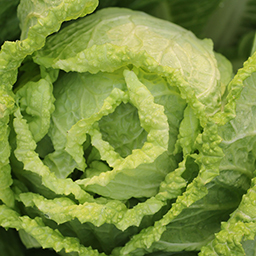Ever finish a plant-based meal and feel like you still want something more? If so, your meal may have been missing “umami.”
Many of us grew up knowing about the four flavors or tastes: sweet, sour, salty and bitter.
The fifth flavor is “umami.” Umami is Japanese for “pleasant savory taste.”
It’s described as a pleasant “brothy” or “meaty” taste with a long-lasting, mouthwatering and coating sensation over the tongue. Studies show it stimulates appetite, but also contributes to satiety.
Umami components are most often associated with cooked and cured meats, fish, shellfish and cheese.
But you may have eliminated animal products from your diet for improved health. So how do you get soul-satisfying plant-based meals without the meat, fish and dairy?
Technically, umami is created when your taste receptors recognize glutamates (naturally occurring amino acids,) and nucleotides, (the building blocks of nucleic acids.)
Fortunately, umami is also present in plants.
Umami Plant-Based Meal Ingredients
Here are the foods that you will want to add to your fridge and pantry for more satisfying plant-based meals:

TOMATOES
The umami from the heavy load of L-glutamate in dried tomatoes, sun ripened tomatoes, tomato paste and tomato sauce is the reason many people will eat a plate of spaghetti with marinara, or Company-Worthy Vegan Lasagna, and never ask “where’s the meat.”

SEAWEED
If you loved seafood and sushi before going plant-based, there is still reason to eat kombu, nori and wakame. Sea vegetables are loaded with umami. Dulse flakes are convenient and can be sprinkled on your meal.

MUSHROOMS
Fresh and dried mushrooms (especially dried shiitake) bring meaty texture and umami flavor to plant-based meals. They’re rich in guanylate, and when paired with umami vegetables high in glutamate, you get a synergistic surge of umami flavor. Add mushrooms to your salads, saute them with greens, toss them into your stir-fry, simmer dried shiitake mushrooms in a soup with green onions.

GREEN PEAS
High-protein, high-fiber green peas deliver umami, but it decreases rapidly after harvest. Stick with super fresh or frozen peas.

CORN
Like peas, fresh corn is full of glutamate, but its flavor and umami decrease rapidly after harvest. (Read about the health benefits of corn, as well as how to select and store it.)

SOY BEANS
Edamame and foods made from soy beans, including soy sauce, tamari, miso paste, tofu, tempeh, and natto, are high in glutamate. These whole soy foods are part of a healthy plant-based diet. (If you have heard that soy is bad for you, please read this post for the latest research.)

OTHER FERMENTED FOODS
Kimchi, sauerkraut, and other fermented condiment style foods bring umami to your meal.

POTATOES & SWEET POTATOES
There’s a reason beyond the fiber and starch that makes potatoes so satisfying. Add cubed potatoes to your soup and the glutamates are released into the broth, adding satisfying umami flavor. Roast some sweet potato and add it to your big lunchtime salad for a more satisfying experience.

CARROTS
This versatile vegetable is easy to love. Carrots are good for us in so many ways, and it turns out they have a decent amount of glutamate. Add shredded carrot to your salads, slice and add to stir frys, steam and toss with lemon zest for a delicious side dish.

BROCCOLI
Glutamic acid is found in the stem and florets. Steam or roast it (with garlic!) and add it to salads and dinner plates.

LEEKS & CABBAGE
Add sliced leeks or cabbage to soups to boost umami flavor. There’s a reason the Chinese, Scots and other cultures add these foods to soups. Chinese cabbage is an excellent addition to any stir fry.

NUTRITIONAL YEAST
This deactivated yeast brings cheesy, umami flavor to all kinds of foods. Sprinkle it on popcorn, add a couple of tablespoons to a pot of soup, or make a soul-satisfying cheesy dip. (As a bonus, this food also boosts immunity and cuts down on the number and duration of colds in children and adults.)

SPINACH
Packed with iron, calcium, carotene, vitamin C, folic acid and other good stuff, there is yet another reason to eat this dark leafy green. Spinach is rich in the umami compound glutamic acid. Eat it fresh in salads, and don’t forget to toss a handful into other plant-based meals like soups and stir frys.

CELERY
Mild and mineral-rich, celery contains glutamate. Include it in your soup and stew bases, along with onions and garlic. Slice it and add it to salads. (Learn about the cancer fighting benefits of celery.)

ONIONS
All kinds of onions, including green onions, contain glutamate. They are also potent anti-cancer foods, so use them in your cooking and add them raw or quick pickled to your salads.

GARLIC
Ahh, gaarrrrlic. How do I love thee. There’s a reason so many recipes start with a saute of onions and garlic. Sliced thin for a pasta dish, minced for a soup or saute, pressed and added raw to tahini for a delicious sweet potato topping. . . garlic deserves its own blog post!
As you are building your salad, or cooking a meal, think about how you can layer on the umami. You may find that you are able to use less salt when your meals are full of umami. You’ll enjoy your plant-based meals more, and they’ll be healthier and more satisfying.
What’s your favorite plant-based umami ingredient? Please share it with me in the comments below.
Reference: Umami Information Center









Leave A Comment